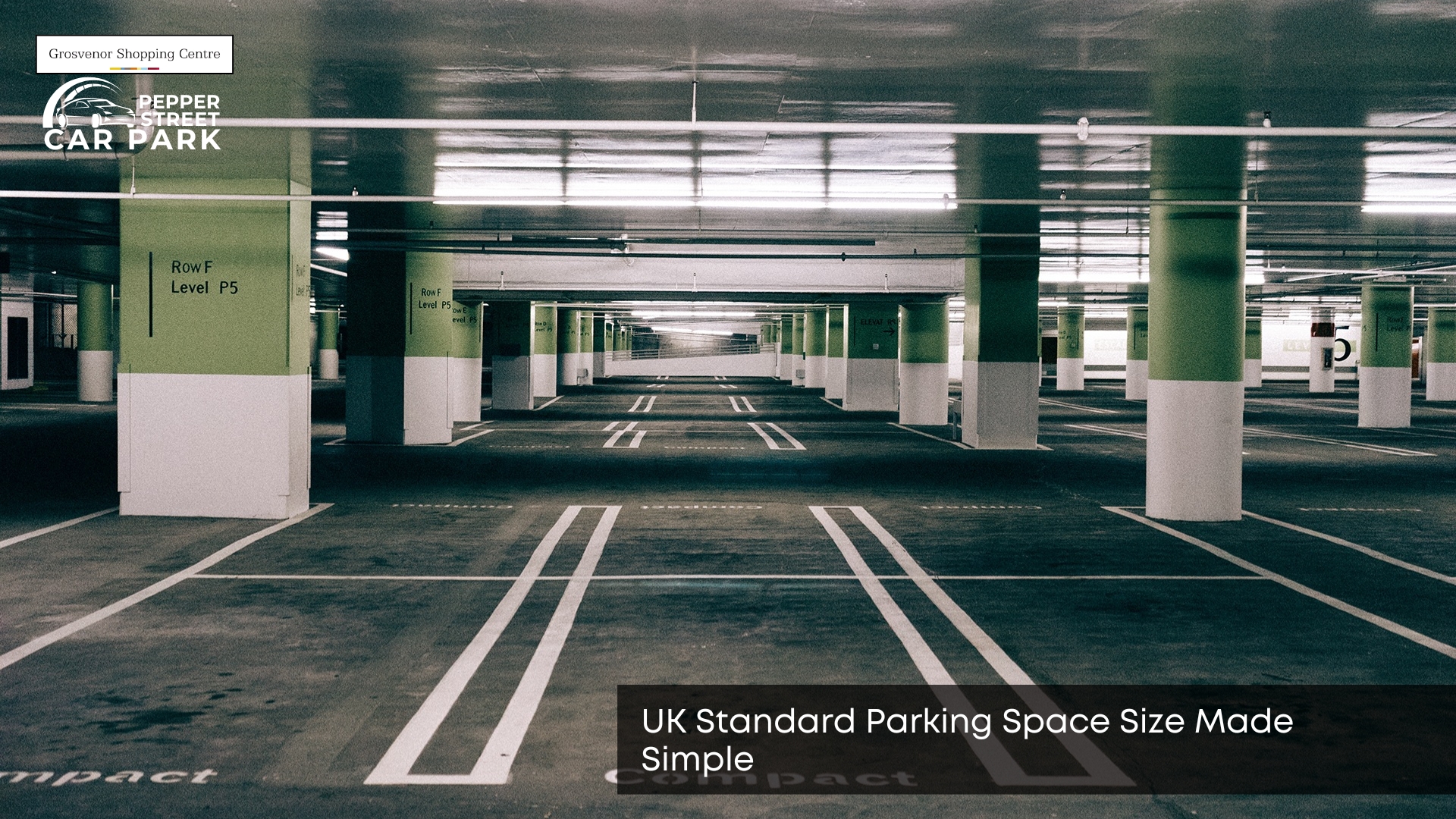Understanding the standard parking space size in the UK can help you avoid awkward squeezes, scrapes, and fines. Whether you’re designing a car park, marking a driveway, or want to know if your car will fit, getting the size right is crucial. This guide breaks it down clearly, with no confusing jargon. You’ll learn about the standard sizes, why they matter, and how to identify when a space might not meet expectations.
What Is the Standard UK Parking Space Size?
The standard UK parking space size is usually 2.4 metres wide by 4.8 metres long. This size is based on most average vehicles, from hatchbacks to saloons, fitting comfortably within the lines. These dimensions apply to both public and private car parks across the country. Some locations may offer slightly wider bays for larger vehicles. Still, 2.4 by 4.8 is the common starting point, and it’s useful to understand how this affects your parking experience.
Why Does Parking Space Size Matter?
Parking space size matters because it affects safety, access, and ease of use for all drivers. If a space is too narrow or short, drivers risk scraping nearby vehicles or struggling to open their doors. In busy car parks, poorly sized bays lead to congestion, frustration, and even accidents. The right space size improves flow and reduces stress. It also plays a key role in determining how accessible and fair a parking area can be.
Are There Different Sizes for Special Parking Bays?
Yes, there are different sizes for special parking bays, such as those for disabled users, parents with children, or electric vehicles. These bays are typically wider than standard, with a width of up to 3.6 metres, allowing for extra room for opening doors or loading equipment. They are also marked clearly with signs and floor symbols. This ensures inclusivity and better safety for those who need extra space. Understanding this helps everyone park more responsibly.
What About Parking Space Sizes in Residential Areas?
Parking space sizes in residential areas often adhere to the standard 2.4 m by 4.8 m rule. Still, some driveways or marked bays may be shorter or narrower in length. Older properties may not meet modern car size standards, making parking more challenging. Some councils provide minimum design guidance for new homes, especially where planning rules apply. If your car feels tight at home, the space might not meet today’s typical standard.
Do Car Park Layouts Affect Space Size?
Yes, car park layouts affect space size because the way bays are angled and arranged changes the amount of space available per car. For example, diagonal or 45-degree bays may be slightly shorter in length but need more space between rows. Multi-storey or underground car parks also reduce bay width to fit more cars. These small layout choices can make a big difference to how easy it is to park.
Is There a Difference Between Public and Private Parking Dimensions?
Yes, there can be a difference between public and private parking dimensions, although most aim to follow the 2.4 m by 4.8m rule. Private facilities may shrink bay sizes to maximise the number of spaces, especially in high-demand areas like city centres. Meanwhile, public car parks often adhere more strictly to guidelines to meet accessibility and safety goals. Knowing what to expect can help you judge if your car will fit.
What Should You Do If a Space Feels Too Small?
If a space feels too small, it’s best not to force your car into it, especially if you’re worried about damage. Check if nearby bays are available or wait for a more suitable one to become free. You can also look for end spaces or those next to bollards for extra room. If it’s a repeated issue in a local car park, reporting it to the operator may prompt a review. Staying cautious is better than risking a scrape.
Are There Rules for Marking Out Parking Spaces?
Yes, there are rules for marking out parking spaces, especially in public car parks or new developments. The British Parking Association offers guidelines that cover dimensions, lines, signage, and spacing between rows. These rules help create a fair and safe environment for drivers. Even for private driveways, following similar rules makes parking easier for households. Proper markings reduce the likelihood of disputes and accidents.
Do Larger Vehicles Have Special Parking Needs?
Yes, larger vehicles like vans or SUVs have special parking needs because they often exceed the standard 4.8 metre length. In some car parks, there are designated sections for long-bay or oversized vehicles. Failing to use the right space can cause your vehicle to stick out and block others. Always look for signs or ask in advance if you’re unsure. Having the right fit prevents disruption for everyone else.
Can Poorly Sized Spaces Cause Accidents or Fines?
Yes, poorly sized spaces can lead to accidents or fines, especially if your car crosses into another bay or blocks access to it. Tight spaces increase the risk of opening door dings, bumper taps, and frustrated drivers. You might also be fined for improper parking, even if the space seemed inadequate. This is why proper sizing is more than just a comfort issue. Understanding roadside parking laws can also help prevent legal trouble in tighter spots.
What Makes a Parking Space Comfortable to Use?
A parking space feels comfortable when it allows for easy entry, provides sufficient door clearance, offers good lighting, and features clear markings. Extra width or length adds to the ease, especially for drivers with children or mobility needs. Smooth surfaces and clear lines reduce confusion and risk. When a space feels generous and well-planned, parking becomes much less stressful.
What to Consider for Home Parking Projects?
For home parking projects, keep in mind the 2.4 m by 4.8m guideline and allow extra space around for door openings or turning. It’s wise to future-proof the design by assuming cars may get bigger or guests might visit. Using clear lines or physical guides helps with everyday use. If you regularly park on residential roads, consider applying for a parking permit in Chester to avoid unnecessary hassle. And if your space feels tight now, you may want to consider widening your drive if possible.
Final Thoughts on Getting the Size Right
Getting the size of a parking space right is key to safety, comfort, and hassle-free parking. From public car parks to home drives, following UK standards makes parking better for everyone. And while space is always at a premium, making smart choices about size helps avoid damage, arguments, or fines. A little extra space goes a long way. For well-marked bays and easy access, central Chester parking options can make your journey smoother from start to finish.


Leave a Reply